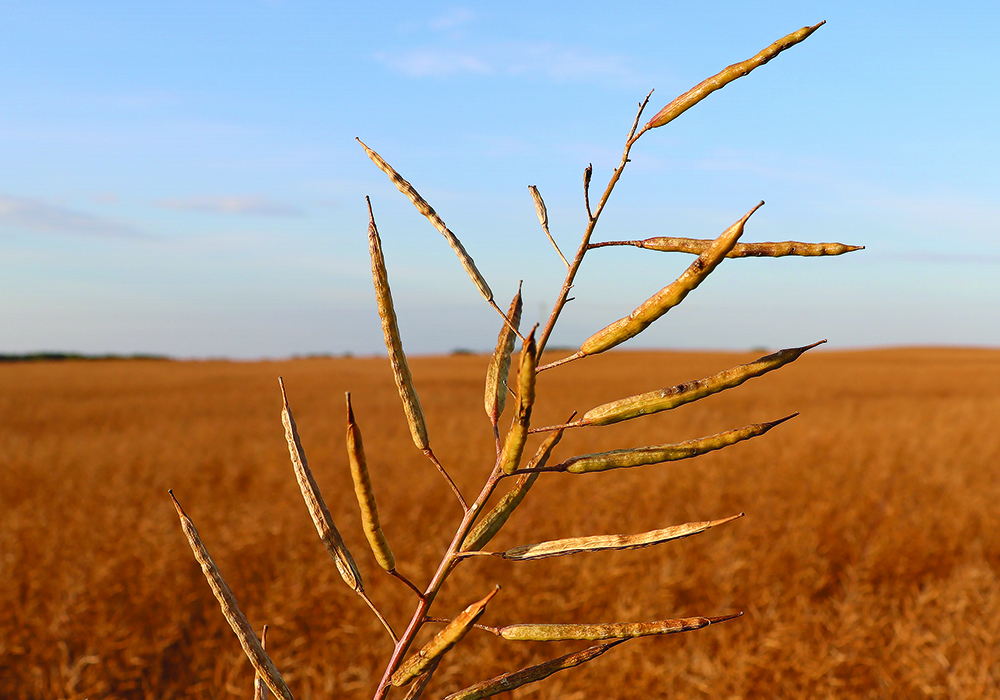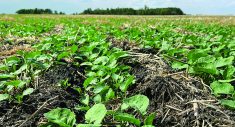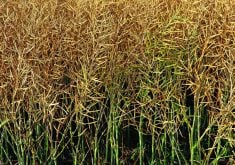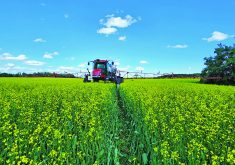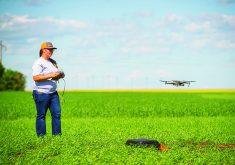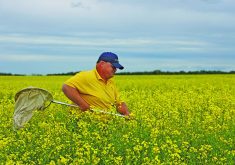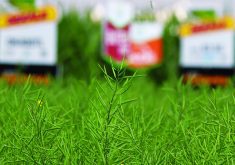It might not be the drought many western Canadian growers recall when thinking back to the 2023 crop, but the canola yields they harvested despite it.
There’s no question that conditions through the growing season were hard on yields, but one of the more perplexing things for me as we put together our first canola yearbook was how some crops fared far better than they had any right to, considering the lack of precipitation they received.
Other stories in the 2023 Canola Yearbook:
- Canola views – photo essay
- Canola growing season in review
- Spraying in dry times can be tricky
- Flying the fields
- Hormone imbalance suspected for malformed racemes
- Incorporating resistant traits weighs on yields
- Production briefs
- Pest roundup: Canola pests kept in check by dry conditions
- Disease roundup: Verticillium has breakout year
- Canola news briefs
- Canola growers scramble to address federal policy issues
- What happens when the big crop comes?
- Bids tumble but canola demand is firm
Read Also
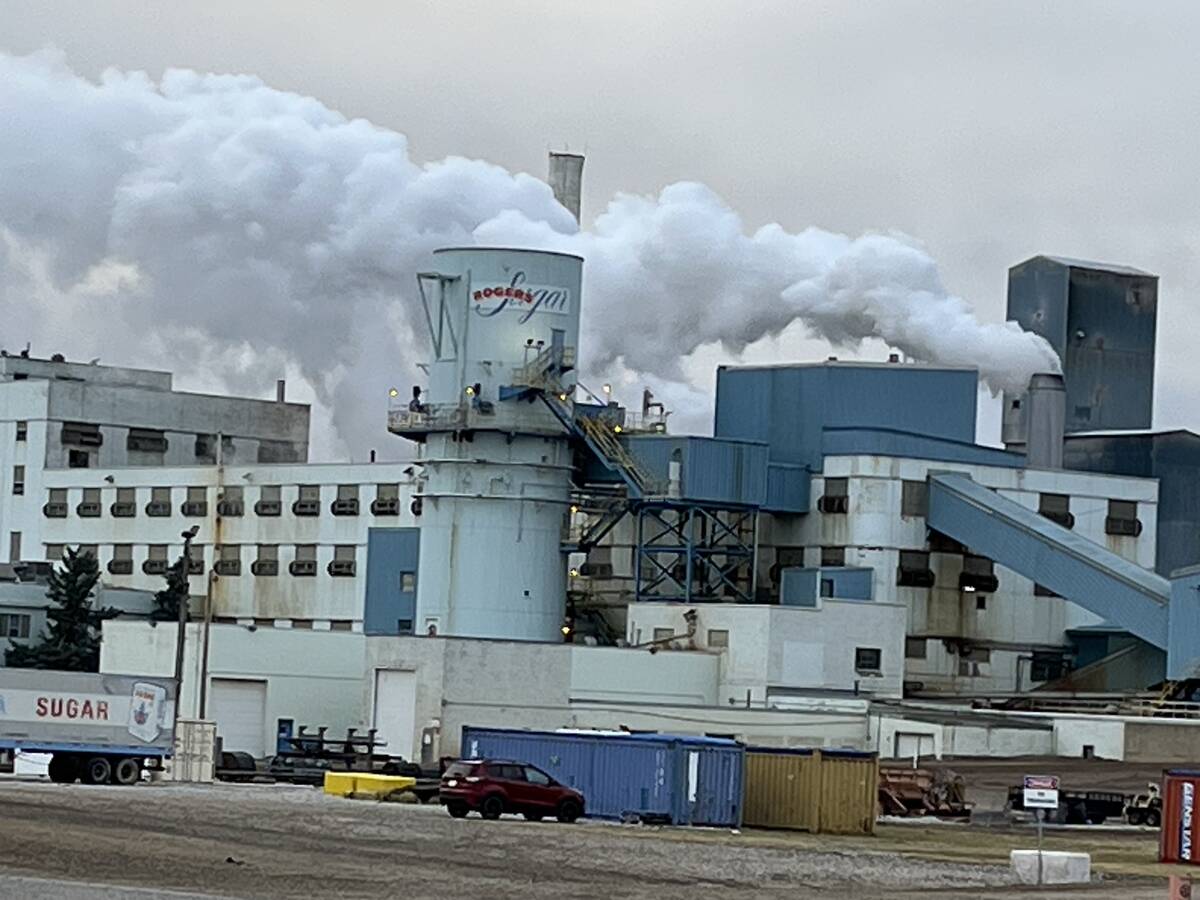
Sugar beet harvest underway in southern Alberta
Alberta Sugar Beet Growers hosts field tour to educate the public on the intricacies of the crop, its harvest process, and contracts with Lantic Sugar
Every crop year has its own story, which is what this supplement is designed to tell. Journalists from The Western Producer and Glacier FarmMedia have gathered and summarized the most important canola-related stories from the past year.
We’ve assembled maps and analyses courtesy of our WeatherFarm and MarketsFarm divisions to help put that story into perspective.
At my home near Roblin, Man., there is very little water in the soil profile with some sloughs completely dry for the first time I can recall. My area missed the scattered showers that did come through.
My lawnmower was parked through the middle of summer because the grass was crispy, but the canola stands and eventually yields in the area were surprisingly good.
Granted, the hours I didn’t put on my lawnmower or the missing water in sloughs are hardly scientific measures.
So, I asked Curtis Rempel, vice president of crop production and innovation at the Canola Council of Canada, to help me understand how some growers were able to achieve good yields in areas where crops were challenged by a lack of water.
He’s been getting this question a lot lately. “Across the Prairies there are a lot of agronomists and farmers scratching their heads saying, how can we pull off these kinds of yields with this lack of moisture, like it just doesn’t seem possible?
“I think this year showed what some of us the breeders have known for a long time, is that the real killer for canola yields is high temperatures.
“There were some pockets of high temperature at flowering, but for the most part it seems like the smoke and haze from the forest fires kept the July temperatures lower than they could have been. So, I think some of the crops got a reprieve,” Rempel said.
He said the critical period for canola is at flowering because temperatures above 30 or 31 C kills pollen and reduces yields dramatically.
Canola plants can recover from high daytime temperatures if night-time temperatures drop down to around 22 or 23 C, or if they have access to water.
Another thing that caught my attention this summer was heavy dews on canola crops through periods where plants were challenged by a lack of water.
Rempel said heavy dew can help canola crops cope with excess temperatures, because plants can absorb some water through the leaves and then use it to cool down.
“Temperature is the big factor. High temperature with adequate moisture, the plant can survive. Cooler temperatures with lower moisture, the plant can thrive. High temperature with a moisture deficit at flowering, the plant just collapses and yields go down to five or eight bushels per acre,” Rempel said.
He said new canola varieties have far better water use efficiency compared to older varieties, which helped protect yields this summer.
“I’m in the same boat. I look at how much moisture I got on my farm this year and the yields were getting and I’m thinking to myself, that just doesn’t equate with what we’ve always thought in terms of how much water you need to produce a bushel of canola,” Rempel said.
“Maybe it’s also the fact that the studies were done so long ago that our breeders have given us such improvements. So, research data that came out of that late 80s and early 90s just doesn’t apply anymore. The plants are just much more efficient at pulling up water and nitrogen than our research indicated and maybe it’s time to redo some of these studies.”
It’s that commitment to ongoing research and extension combined with farmers making in-the-field decisions that makes western Canada the canola powerhouse that it is.
We hope this collection of stories and canola-related information serves as a reminder of the state of the industry in 2023.
Thank you to the farmers and industry representatives that sent in photos of their 2023 canola crops for this supplement.
Contact robin.booker@producer.com


